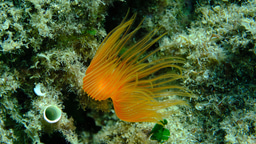Oh My Vesicle!
Published in Microbiology

An interesting paper was just published in Nature Communications linking the putative phospholipid transport system Vac/Yrb to outer membrane vesicle (OMV) formation in Haemophilus influenzae and Vibrio cholerae.
A novel mechanism for the biogenesis of outer membrane vesicles in Gram-negative bacteria
Sandro Roier, Franz G. Zingl, Fatih Cakar, Sanel Durakovic, Paul Kohl, Thomas O. Eichmann, Lisa Klug, Bernhard Gadermaier, Katharina Weinzerl, Ruth Prassl, Achim Lass, Günther Daum, Joachim Reidl, Mario F. Feldman & Stefan Schild
Nature Communications 7, Article number: 10515 doi:10.1038/ncomms10515
As the authors nicely describe, there are three leading theories to describe the mechanism governing OMV; loss of covalent contact between the OM and peptidoglycan (PG) allow the OM to protrude and the vesiculate; accumulation of misfolded protein and PG fragments exert a turf or pressure on the OM causing it to bulge, leading to vesiculation; enrichment of membrane curvature inducing molecules result in bulging and ultimately vesicle formation.
Now Roier et al add a fourth, with the identification of Vac/Yrb via a transposon mutagenesis screen for genes that impact OMV production in Haemophilus. They see that gene deletions of vacJ and yrbE leads to increases in OMV production in both H. influenzae and V. cholerae while analysis of the lipidome of these vesicles reveals that they are enriched on phospholipids and some fatty acids. The authors also see that Vac and YrbE levels respond to iron starvation.
They propose a model whereby loss of vacJ or Yrb genes leads to increased phospholipid in the outer leaflet of the OM leading to an outward bulging. Why would this be iron regulated? They hypothesize that when the bacteria encounter iron limiting conditions in vivo, down regulation of these genes resulting in increased production of OMVs which counteract host serum and complement defences.
It's an interesting model that will bear some further testing but at the least this study supports the growing interest in how OMVs are produced and what functions they carry out.
Follow the Topic
-
Nature Microbiology

An online-only monthly journal interested in all aspects of microorganisms, be it their evolution, physiology and cell biology; their interactions with each other, with a host or with an environment; or their societal significance.
Related Collections
With Collections, you can get published faster and increase your visibility.
Progress towards the Sustainable Development Goals
Publishing Model: Hybrid
Deadline: Ongoing
The Clinical Microbiome
Publishing Model: Hybrid
Deadline: Dec 11, 2025


![Highlights of the BMC Series - [October] [2025]](https://images.zapnito.com/cdn-cgi/image/metadata=copyright,format=auto,quality=95,width=256,height=256,fit=scale-down/https://images.zapnito.com/users/840921/posters/759a1fb0-b10f-491e-bdff-940b3c1a87de_medium.png)


Please sign in or register for FREE
If you are a registered user on Research Communities by Springer Nature, please sign in